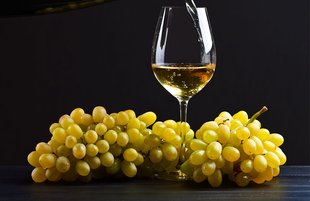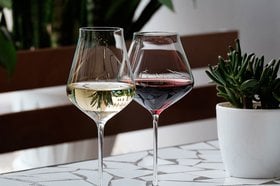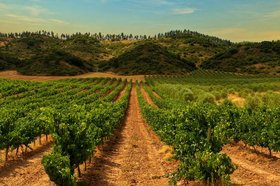6 Main Differences between Sauvignon Blanc vs Chardonnay
Are you struggling to decide between a glass of Sauvignon Blanc and Chardonnay for dinner?
These gorgeous wines are the world’s favorite white wines, and to the untrained palate, it can be difficult to tell them apart.
Don’t worry - we have you covered!
This article will look at the subtle differences between Sauvignon Blanc vs Chardonnay as we discuss the grapes, regions, taste, alcohol content, and food pairings.
We will even help you decide which white wine you should choose for your next event.
Further reading
- Discover the magnificent Chardonnay wine and the best bottles to buy now.
- Explore all about Sauvignon Blanc wine in this insightful guide.
- Find out which White Wine Glass will bring the best out of your favorite white wine.
Sauvignon Blanc vs Chardonnay: 6 Key Differences
Let’s delve into the key differences between these white wines.
1. Sauvignon Blanc vs Chardonnay Grape

Chardonnay grapes originated in Burgundy (like Pinot Noir), while Sauvignon Blanc comes from Bordeaux - making them both popular French white grape varietals.
Both grape varietals are also used to make the famous sparkling wines and the charming Champagnes we love.
The Chardonnay and Sauvignon Blanc grape varieties are round and green and generally grow in tight clusters.
The only subtle difference is that Sauvignon grapes grow in slightly looser clusters than Chardonnay.
2. Regions
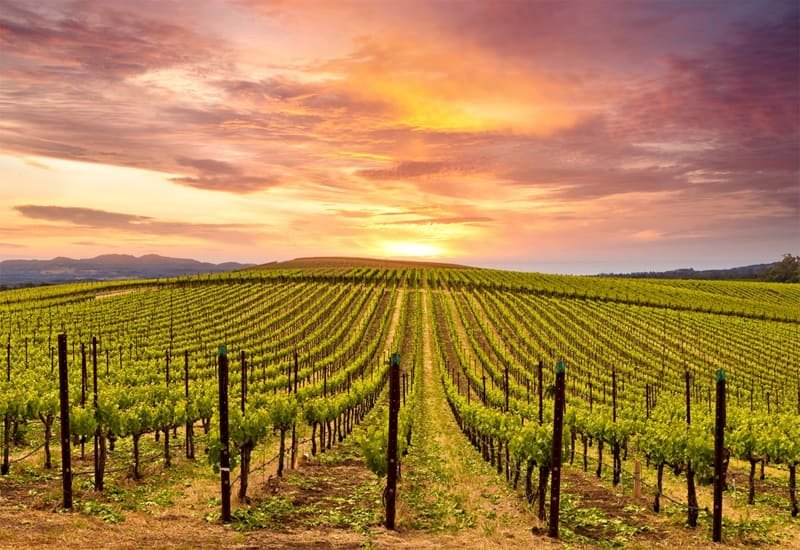
When looking for a delicious Chardonnay, the best regions are California, Oregon, New Zealand, Spain, Chile, Italy, Australia, Côtes de Beaune and Languedoc (France.)
The world-renowned California Chardonnay from Napa Valley is a must for Chardonnay lovers.
When on the hunt for a great Sauvignon Blanc, look for the following regions: New Zealand; Loire Valley, Pays d’Oc, Sancerre, Pouilly Fumé (France,) California, Yakima Valley (Washington,) Chile, and Friuli Venezia-Giulia (Italy.)
3. Winemaking Techniques

Chardonnays are often fermented in an oak barrel, and these wines are referred to as “oaked Chardonnay.”
Oaked wines go through a process known as malolactic fermentation, which softens the acidity. Malolactic fermentation occurs in almost all red wine but not as often in white wine.
However, to preserve the acidity of Sauvignon Blanc wine, fermentation occurs in stainless steel tanks. Some winemakers have successfully experimented with oak barrel aging for a more complex flavor profile.
4. Taste And Aromas
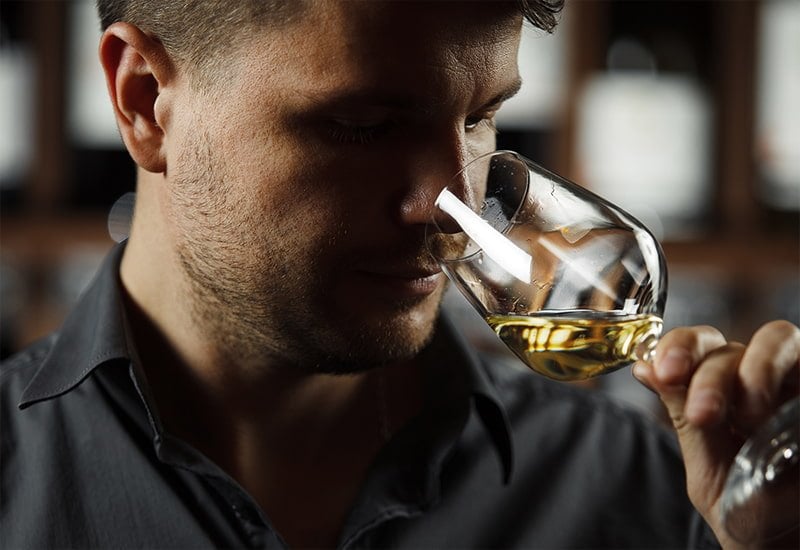
When it comes to Chardonnay, there are two different styles that you can choose from: oaked vs. unoaked.
- Oaked Chardonnay is a full-bodied wine with a rich texture and notes of sweet vanilla, honey or caramel.
- Unoaked Chardonnay is a dry, crisp white wine with a fruity flavor profile and higher acidity.
Sauvignon Blanc is a refreshing dry wine and tends to be sweeter than Chardonnay. This dry white wine has a powerful aroma that is easiest to describe as “very green!”
It has a prominent flavor of green apple, passion fruit, white peach, and lime, making it quite versatile for food pairings, much like Pinot Grigio.
However, Sauvignon Blanc wines made in different regions and climates will also vary in their tasting notes. Depending on the region, you’ll find fresh-cut grass, gooseberry, jalapeño flavors, or fruitier notes of grapefruit, white peach, and strong passion fruit flavor.
For instance, a New Zealand Sauvignon Blanc wine will have higher acidity, intense grassy notes and a richer texture from the small amount of added sugar.
On the other hand, producers in Bordeaux use oak barrels to age their Sauvignon Blanc wines, which adds rich, creamy flavors to the Sauv Blanc wine.
5. Alcohol Content
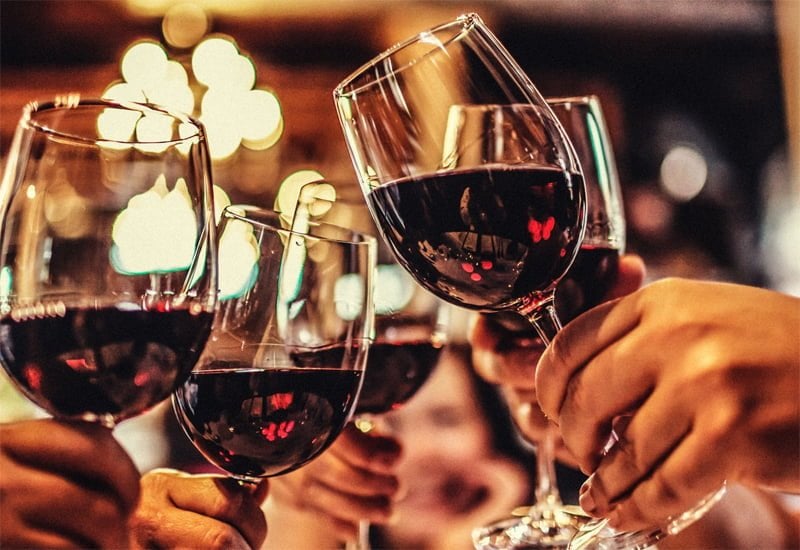
The alcohol content in a wine determines how strong it is and the grape variety plays a role in this.
Chardonnay grapes have low sugar content, resulting in high alcohol levels, whereas Sauv Blanc tends to have lower alcohol content.
Chardonnay wines from Australia, Chile, and California typically have 13.5 - 14.5% alcohol content. On the other hand, Sauv Blanc wines from South Africa and New Zealand have 12.5 - 13.5% alcohol content.
6. How To Serve And Food Pairings

Both Chardonnay and Sauvignon Blanc wines are best served chilled, and if you are serving their oaked version - serve them slightly warmer.
A universal white wine glass is best for Sauvignon Blanc and Chardonnay, and neither of these wines needs to be decanted - so you can enjoy them straight away!
When it comes to food pairings, Chardonnay wine pairs perfectly with light and delicate food such as grilled fish and shellfish, but it also pairs well with mild, creamy, and butter dishes.
Chardonnay doesn’t pair well with acidic foods such as raw tomato, olives, and bitter vegetables.
Foods that will bring out the best flavor of Sauvignon Blanc are goats’ cheese and green vegetables. But the crisp and zesty Sauvignon Blanc doesn’t pair well with rich and creamy foods as a Chardonnay would.
Still not sure which white wine will suit your palate?
How To Decide Between Sauvignon Blanc And Chardonnay
Here are some of our suggestions:
1. Sauvignon Blanc

No two bottles of Sauvignon Blanc are the same, which makes it such an exciting white wine to explore.
Sauv Blanc tends to be very similar to Pinot Grigio, the more decadent French wine style.
Some Pinot Grigio drinkers could be pleasantly surprised to find how much more aromatic the crisp, fruity, and zesty Sauvignon Blanc wine is!
5 Sultry Sauvignon Blanc Wines to try:
- 2015 Dana Estates Hershey Vineyard Sauvignon Blanc, Howell Mountain, USA ($279)
- 2014 Screaming Eagle Sauvignon Blanc, Oakville, USA ($6777)
- 2016 Laberinto Sauvignon Blanc, Maule Valley, Chile ($21)
- 2015 Tabali 'Talinay' Sauvignon Blanc, Limari Valley, Chile ($17)
- 2019 Bota Box 'Nighthawk Gold' Vibrant Sauvignon Blanc, California, USA ($5)
2. Chardonnay

Chardonnay tends to be the first wine to come to mind when thinking of white wine.
The range of tasting notes from each bottle from different vineyards is just one of the reasons Chardonnay is so popular; there’s a glass out there for everyone to enjoy.
5 Charming ChardonnayWines to try:
- 2004 Krug Clos du Mesnil Blanc de Blancs Brut, Champagne, France ($813)
- 2017 Salon Cuvee 'S' Le Mesnil Blanc de Blancs Brut, Champagne, France ($650)
- 2018 Leeuwin Estate Art Series Chardonnay, Margaret River, Australia ($82)
- 2018 De Morgenzon Reserve Chardonnay, Stellenbosch, South Africa ($24)
- Pacific Peak Chardonnay, California, USA ($3)
Enjoy These Classy White Wines While You Build A Wine Portfolio!
If you prefer an oaked Chardonnay wine, try an oaked Sauvignon Blanc. And if you are a Sauv Blanc fan, try an unoaked Chardonnay instead.
While some of these white wines are meant to be enjoyed in their youth, some high-end Chardonnay and Sauvignon Blanc wines are a great investment choice for a high-performing portfolio.
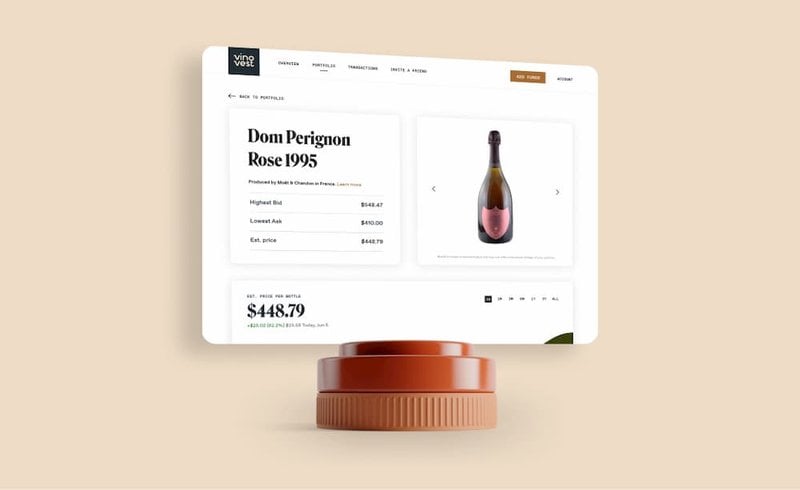
Visit the Vinovest website today and find out how you can invest in Chardonnay, Cabernet Sauvignon, and other investment-grade wines from around the world.
